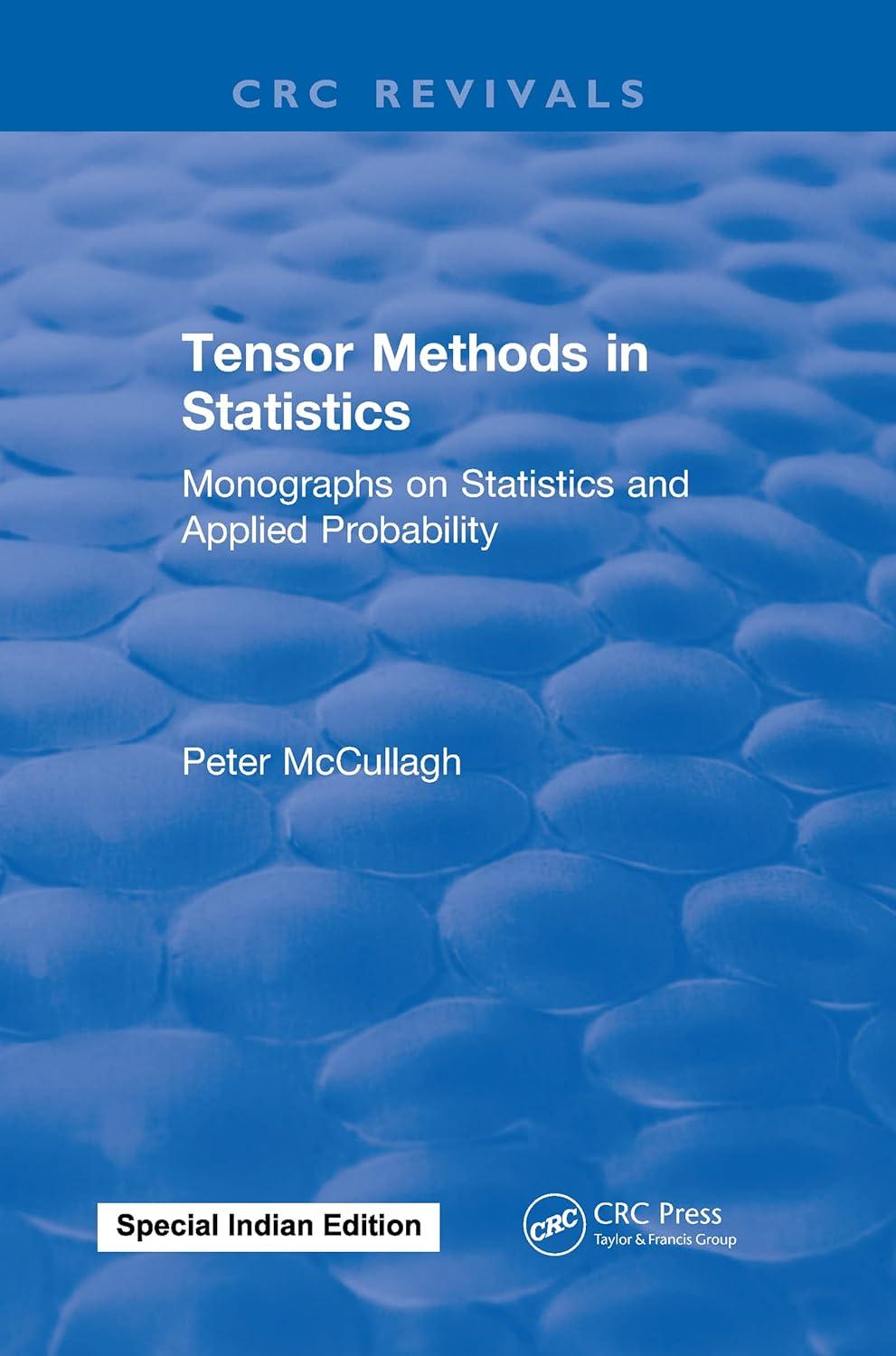Show that ij ( ij) 2 = n 2/ (n 1). Hence derive the following joint
Question:
Show that
∑ij
(ϕ
ij)
2 = n 2/ (n − 1).
Hence derive the following joint cumulants of k-statistics:
Show explicitly that the term κ
r,t,uκ
s,v does not appear in the third cumulant, κk
(r∣s∣t,u,v).
Fantastic news! We've Found the answer you've been seeking!
Step by Step Answer:
Related Book For 

Tensor Methods In Statistics Monographs On Statistics And Applied Probability
ISBN: 9781315898018
1st Edition
Authors: Peter McCullagh
Question Posted:





